|

|
- Engaged
Learning and Technology
-
- Engaged learning combines many important
elements. Explore each of these aspects to
learn how you can activate the learning
environment.
|
- Problem
Solving
- How much food does it
take? Why do they swim
that way? Why does it
look like that? Let's find
out! Let's use
technology! Problem-solving involves
questioning and seeking alternative
options.
-
- Technology & Problem
Solving
- Technology resources and skills can be
applied to a range of problem solving
environments.
- Data Collection
- Data Organization
- Problem Analysis
- Communicating
- writing, drawing, diagrams, charts,
graphs, spreadsheets
-
- Productivity Tools
- Although Microsoft Office is a popular
tool for all ages, consider exploring the
productivity tools designed specifically for
children. For example, ClarisWorks for Kids
contains tools and templates specifically for
young children. Students can write, draw,
organize and analyze information, and even
create a graph.
- Microsoft Office or
- Word Processing - Claris for Kids
- Database - Filemaker
- Spreadsheet - Crunchers
- Graphing - Graph Club
- Math/Science Specialties
-
- Use productivity tools in conjunction
with Internet-based data sites. For example,
Science
Experiments provides science experiments
for elementary and middle school
students.
|
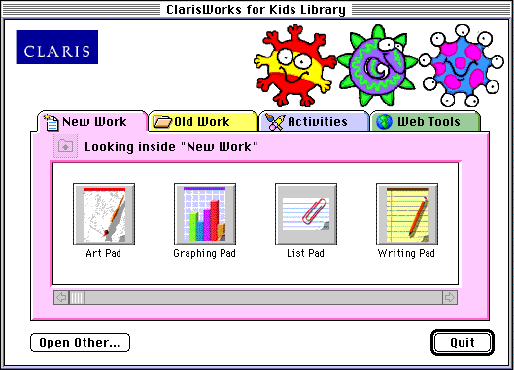
ClarisWorks for Kids
|

Dive for
Pearls
|
- Problem
Solving
- Brainstorm ways that you could more
effectively integrate productivity tools into
an existing project.
|
- Information
Processing
- Information processing involves students in
gathering, selecting, evaluating, analyzing, creating,
and communicating data, resources, and ideas. We've
developed a new set of Ws to help explore information
processing.
- Watching
- Wondering
- Webbing
- Wiggling
- Wrapping
- Waving
- Wishing
- Watching
- Students
- become observers of their environment
- seek action and change
- become in tune with the world around them
Explore topics before deciding on a focal point. Ask
students to examine online news.
- Wondering
- Students
- focus on exploration of ideas
- involves surprise, curiosity, doubt
- brainstorm, discuss, reflect
- The challenge is keeping an open mind. Provide
students with a few good starting points.
- Webbing
- Students
- locate info, connect ideas
- one strand of information leads to new questions
and ideas
- select relevant information and organize into
clusters
- Strands and threads form woven information
networks. Use software to help students organize their
ideas.
- Wiggling
- Students
- twist and turn information looking for clues,
ideas, and perspectives
- evaluate the quality of information
- seek advice from peers and experts
- Wigglers often think with their minds and
bodies. Wiggling involves
evaluating information.
- Authority:
- Objectivity:
- Is the information biased?
- Reliability:
- Is the information accurate?
- Relevance:
- Is the information helpful?
-
- Use Internet resources to help students identify
experts (Ask An
Expert) they might contact to help answer
questions. The Internet contains some excellent
information evaluation tools such as the Cyberbee
Evaluation.
-
- Weaving
- Students
- apply and synthesize information
- originate new ideas, create models,
form plans
- form products by interlacing
strands
- Weaving requires the highest levels of
thinking. Ask students to compare and
contrast information from various sources.
For example, they might explore the
information about the tobacco industry at
the American
Lung Association
and PBS.
Use a chart to show the comparisons.
-
|
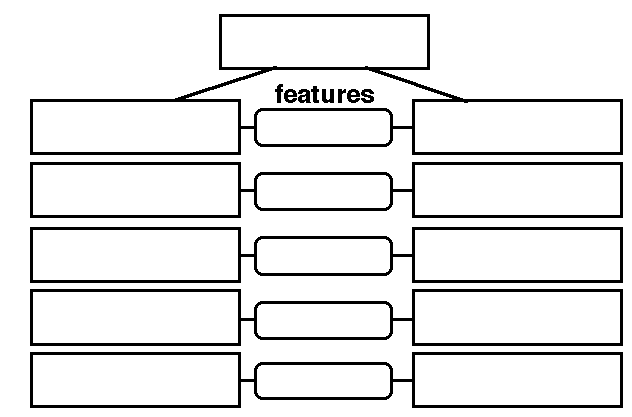
Weaving: Comparisons
|
- Wrapping
- Students
- package their ideas, solution,
communications
- wind, fold, surround, embrace their
product
- Gifts are more fun when they're
wrapped! For example, students created
community involvement web projects at the
Nonprofit
Prophets site.
-
- Students can also use software
packages such as KidPix, HyperStudio, and
Imagination Express to produce final
products.
|
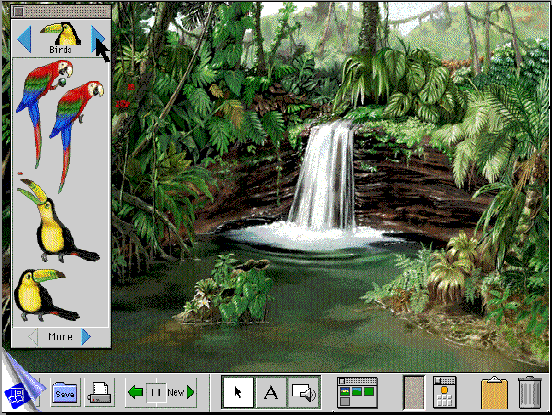
Imagination Express
|
- Waving
- Students
- share your ideas, try out new approaches, ask for
feedback
- develop waves to gain the attention of their
audience
- Waving a flag, volunteering at a soup kitchen, or
publishing in an ezine are all ways to share ideas.
Students could post their music project at
the Young
Composers or find an address at Switchboard
and send a letter to a person or company.
-
- Wishing
- Students
- think about how the project went
- consider possibilities for the future
- reflect on the project
- Without a wish, things will never change. Help
students find epals to share with at places like
Kid
Link.
-

Dive for
Pearls
|
- Information
Processing
Do you explore all of the steps with your
students? Think about a project that your
class recently completed. Which of the
following areas could you expand?
- Watching
- Wondering
- Webbing
- Wiggling
- Wrapping
- Waving
- Wishing
|
-
-
- Collaboration
- Collaboration involves working
together to address
a problem, simulate
an event, or answer
a question. At the Virtual
Congress site students across the
nation collaborate like the real
government.
-
- Students can also work together to
create projects. For example, they might
build a HyperStudio stack to review a
field trip, event, or process. The example
on the right shows a project where
students created a HyperStudio stack after
an outdoor education event. They scanned
pictures and recorded their voices.
-
- Chaining is a popular way to create
collaborative projects. Each student
contributes to the project. In the example
on the right, each student adds a card to
a HyperStudio story.
-
- There are many areas where chaining
can be fun:
-
- Writing - add a paragraph
- Timelines - add an event
- Drawing - add to picture
- Experiments - along a river
|
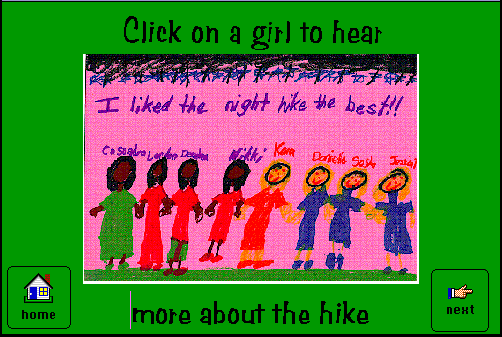
HyperStudio
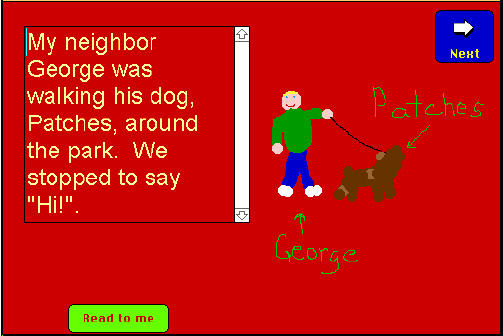
|
-
Communication
- Sharing with others is half the fun!Keep in mind
that there are many ways for students to communicate.
There are also many technologies that can be used for
communication.
- letters
- email
- web pages
- videos
- The TESAN
project involved students from throughout the world.
By sharing their projects, students learned about
another place, but they also were motivated to learn
and share more about where they live.
-
- Consider projects that involve experts, community
members, or other adults. For example,
this Science
Fair Project involved a real scientist as part of
the project.
-

Dive for
Pearls
|
- Communication
Think about ways that you could add a
communication component to an existing
project.
|
-
-
- Authentic
Material
- Authentic resources are important in learning.
Some examples are shown below:
- Letters
- Diaries, Journals, Logs
- Data
- Documents
- Speeches
- Videos
- The links below access some good starting points
for authentic information.

Dive for
Pearls
|
- Authentic
Materials
Explore authentic information resources on
the Internet. Brainstorm a simple activity
that would incorporate authentic resources.
Remember, you can always find good resources
in the news at CNN
or USA
Today.
|
- Real World
Fun!
- Think of ways to link your activities to the real
world. Use real-world resources, materials, and
experiences. Don't just read about it. Do it and share
it with others. For example, kids in Hawaii learned
about the Green
Sea Turtle and shared their experiences in a
ThinkQuest adventure.
-
-
Project-Based
- Projects are a wonderful way to engage learner.
There are many types of projects.
- Classroom Projects
- Cross-Grade Projects
- School Projects
- Community Projects
- Online Projects
- Use the following sites to explore some project
possibilities.
-
- Collaborative Projects
- On Your Own
- Find a Partner
- Join a Group Project
- Coordinate a Project
- On Your Own
- You're in control
- You're alone with problems
- You're missing the power of interaction
- Ask An
Astronaut
-
- Find a Partner
- Do you have shared goals?
- Are your classes compatible?
- Who will maintain pages?
- firewalls, posting problems
-
- Advantages: Small Group
- You have support & interaction
- Management is easy
- Your "N" is more than one
- You can do comparisons
- Your students have an audience
-
Advantages: Large Group
- You have lots of data
- You have more perspectives
- More people, more problems
- More people, more ideas
-
Create a Project
- How will people join?
- How will you recruit?
- Who will manage and coordinate pages?

Dive for
Pearls
|
- Create Pearl
Projects
- Explore the following project. What do
you think?
What kind of collaborative, online project
would engage your students?
|
  
|